feb 25 lecture binomial distribution
1/13
There's no tags or description
Looks like no tags are added yet.
Name | Mastery | Learn | Test | Matching | Spaced |
|---|
No study sessions yet.
14 Terms
Bernoulli random variables
a Bernoulli distribution is a discrete probability distribution of a random variable with only 2 possible outcomes (binary or dichotomous variable)
Will also have mutually exclusive and exhaustive outcomes
The outcomes take the value 1 with probability p and the value 0 with probability 1-p
→ We can define the probability mass function as:
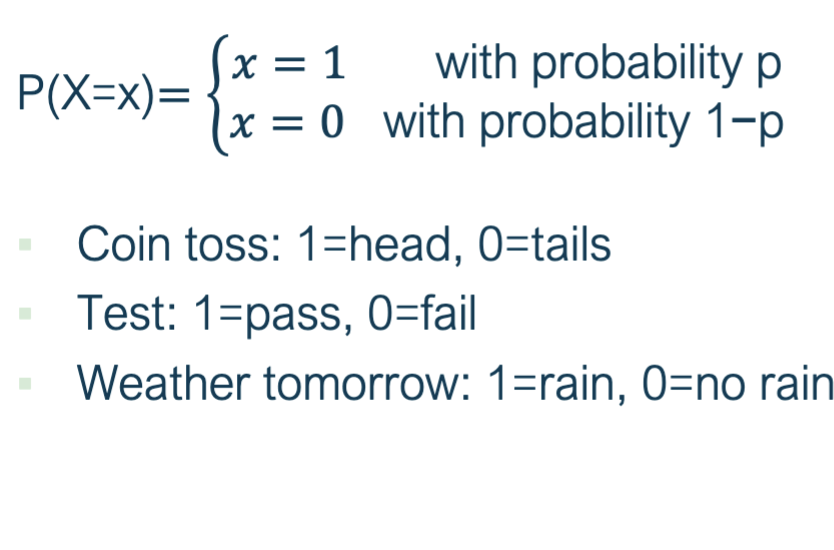
Bernoulli distribution
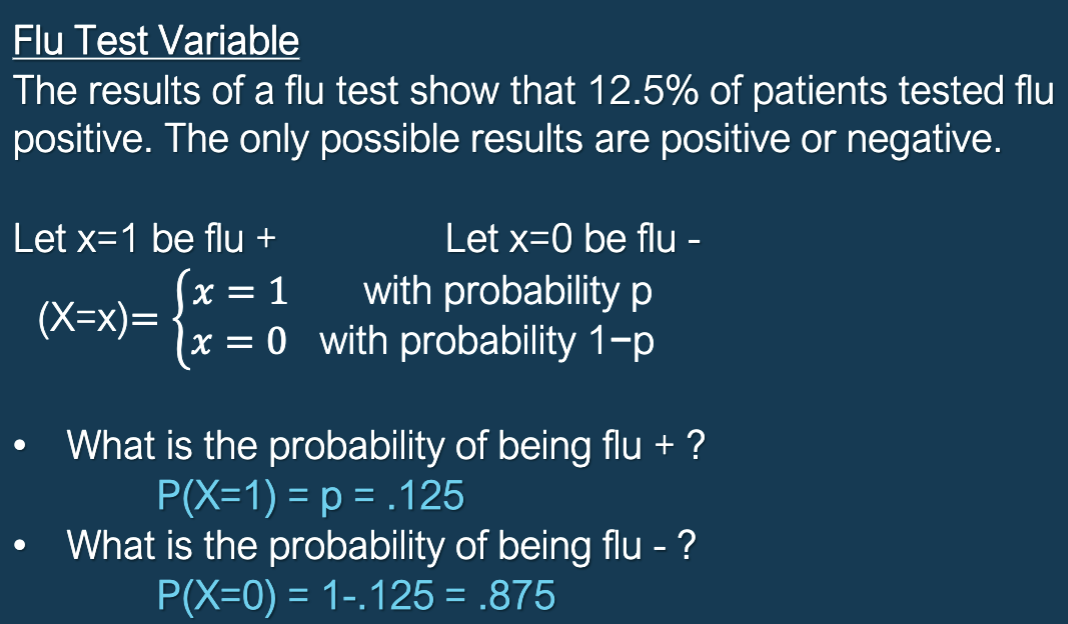
Binomial random variables
examine a random binary outcome over multiple independent Bernoulli trials
1 trial → Bernoulli
2+ trial → binomial
If there are n (number of trial) independent Bernoulli trials, each of
which has a probability of “success” p (proabability), we can let
X denote the total number of successes observed
in n trials
binomial parameters & assumptions
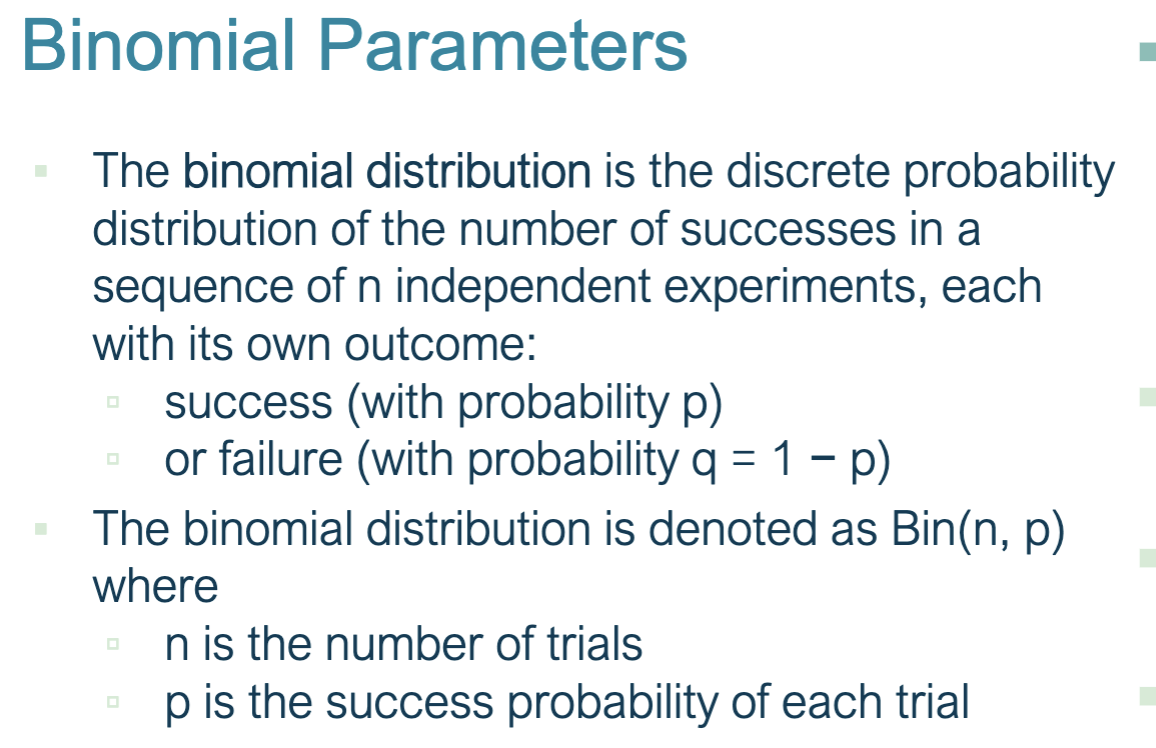
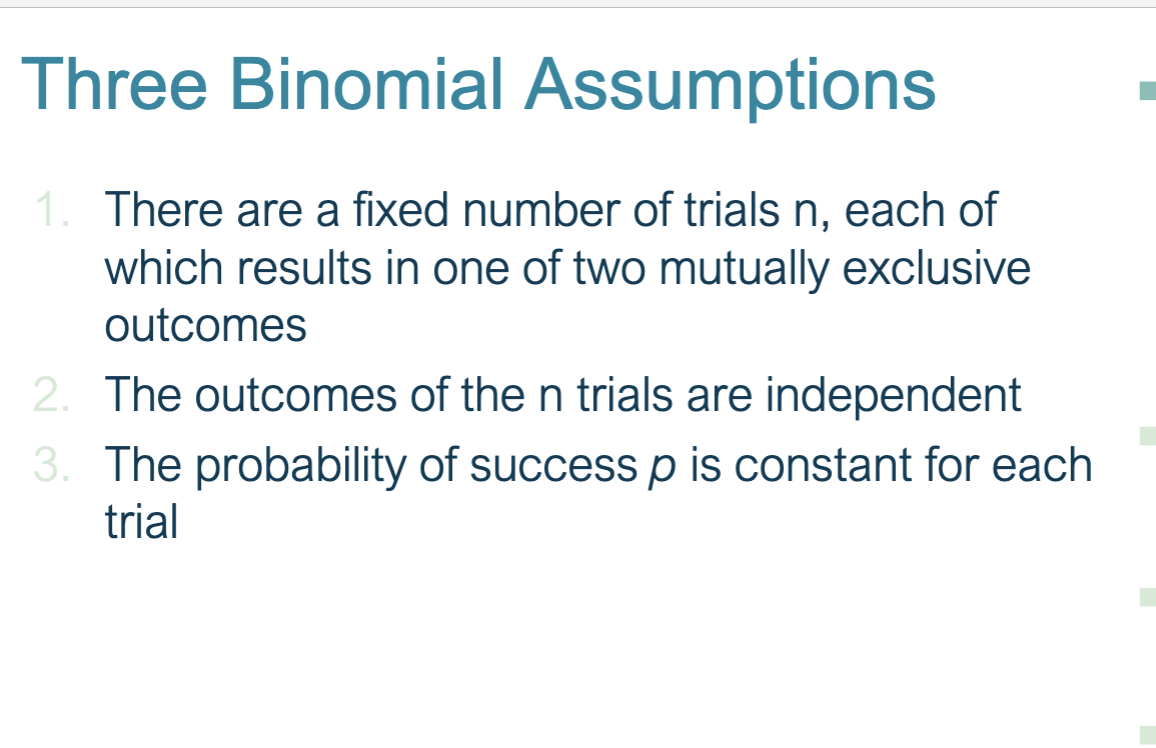
factorials
A factorial is the number of different ways to
order n distinctive subjects
▪ Formula: n! = n(n − 1)(n − 2) ···(3)(2)(1)
▪ Example: 5! = 5*4*3*2*1 = 120
▪ By definition, 0! is equal to 1
combinations
A combination is the number of different ways to pick x subjects out of a total of n subjects without regard to order

factorial and combination example 1
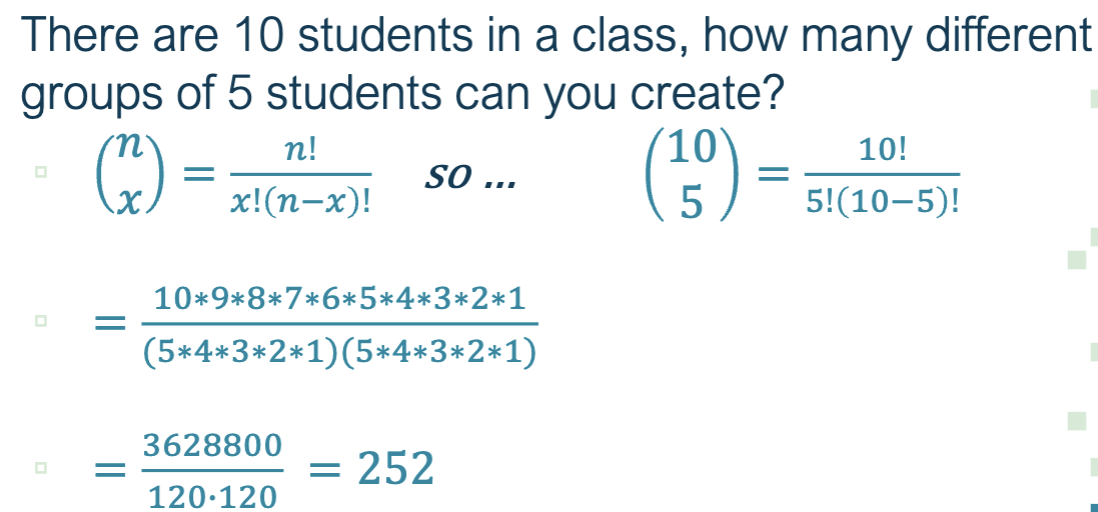
combination example 2 - in order

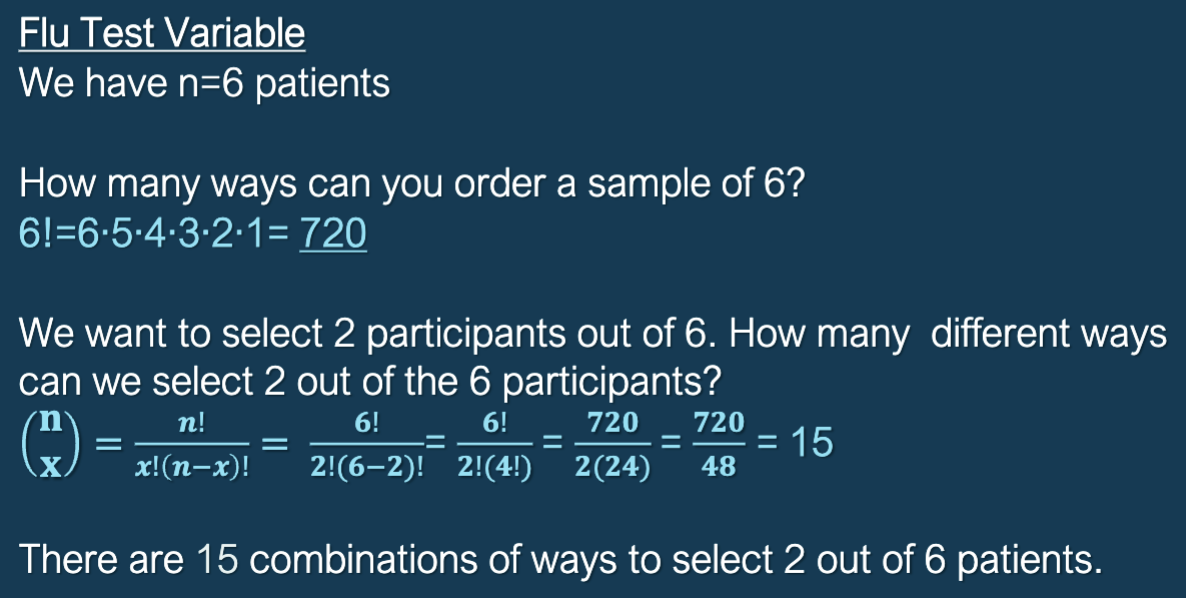
binomial probability mass function
The probability of observing X= k successes out
of n independent trials is given by the probability
mass functionlast formula is the most important
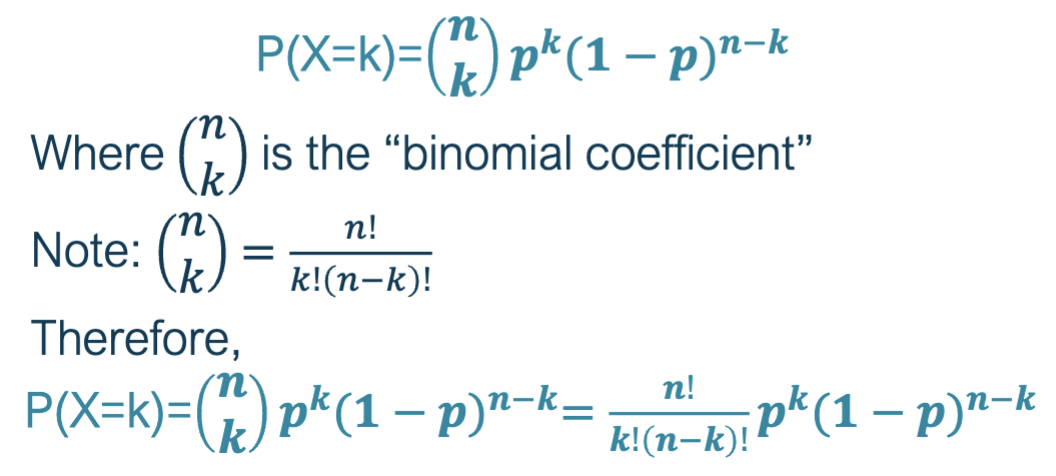
Binomial PMF Example
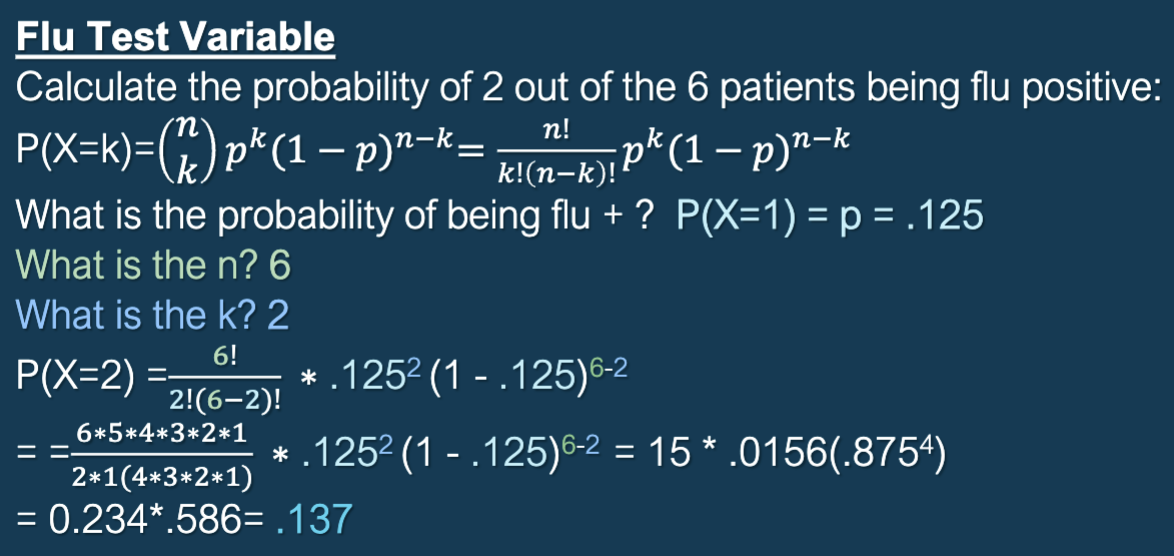
their chances of being flu positive: .137
binomial cumulative distribution function (Binomial CDF)
the CUMULATIVE distribution function of a binomial random variable
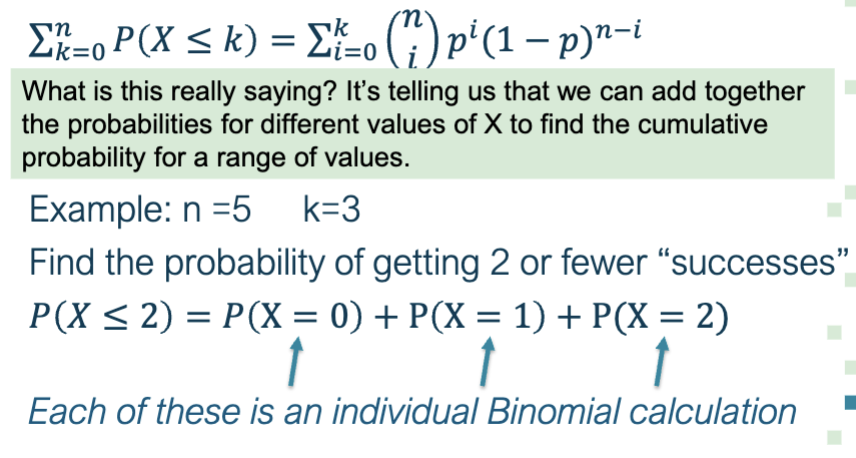
binomial cumulative value - methods
For binomial random variables, combined probabilities can be generated in 2 ways:
Direct method: If examining a small range of probabilities, you may sum each probability
Indirect method: If examining a large range, sum the probabilities NOT included in your range, and subtract from 1(the compliment)
→ Be very aware of the range for your question(e.g. less than, more than, at least, at most)
binomial CDF example - with indirect and direct method
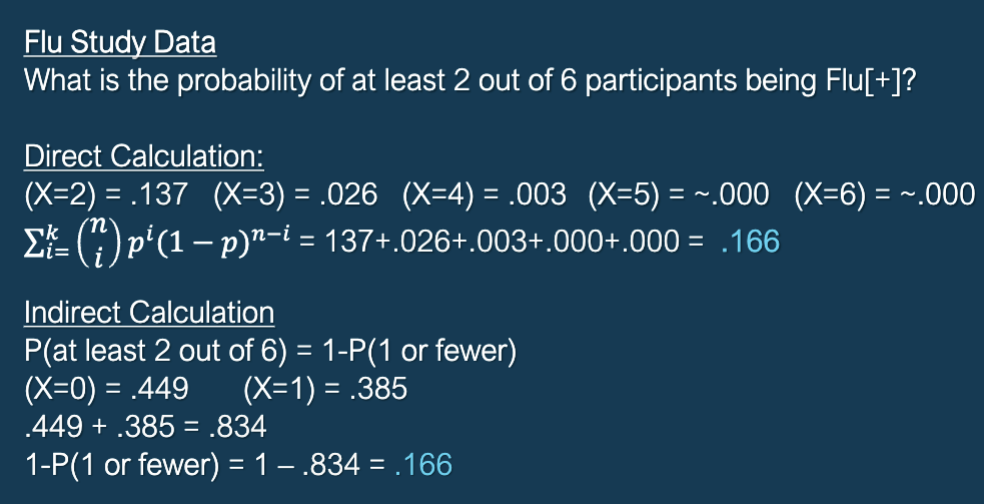
x=2 through x=6 would have had to calculated beforehand
.834 = 1 or fewer
→ COMPLEMENT RELATIONSHIP (1-P)
*2 out of 6 - finding the complement = 1 or fewer
bin distribution mean and variance and example
specifically binomial random variables:
mean = np (AKA: expected number of successes)
variance = np(1-p)
→ EXAMPLE:
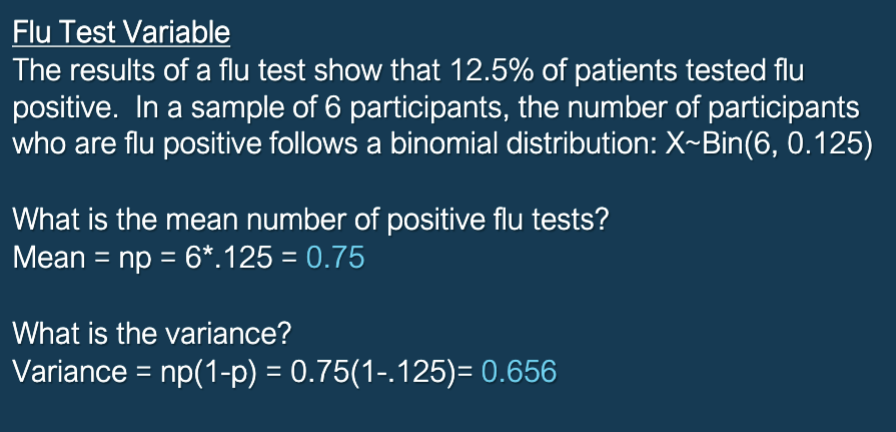
expected number of positive flu tests (mean)